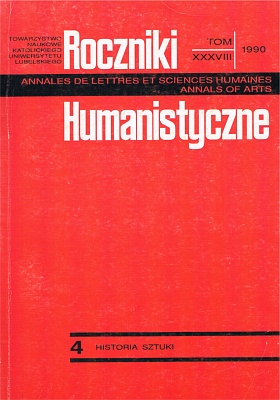A Few Words About Modernism: Malwina Posner-Garfein
Abstract
The first issue of Cracow monthly „Krytyka” (Critique) was brought out in April 1896. It was signed by Władysław Kolbe, but from the time of the publication of the second issue to the last in June 1897, when the magazine was closed down, it was Wacław Pasławski who acted as figure-head of the wheol monthly being an active party member of PPSD and editor-in-chief of the oficial party organ „Naprzód” (Forward). The magazine profile, however, was shaped mainly by the co-founder and leader of PPSD in Galicia and Cieszyn Silesia, Ignacy Daszyński. Thus „Critique” as a „social, learned and literary monthly” was focused in the beginning on the social and political problems. The political programme of the monthly was formulated by Daszyński who wrote that its essence would be a tendency to „gain free and independent both of the Czars’s slavery and delivered from the clutches of capitalism Poland”. In its literary part „Critique” wanted to „become an organ [...] of young talented writers and a translator of more modern literary and artistic trends”.
Though „Critique” recommenced in April 1899 had a new numbering of the annals, but its form and content made it to be a continuatior of the former series. In the end of 1900 Wilhelm Feldman took up the editorial office. He was an advocate of intense activity for the sake of Poland’s independence and taking an active part in it by the people of art. Feldman upheld the main line of the magazine which he ran until its close-down in 1914.
Numerous coworkers of „Critique” were also mouthpieces of an art engaged in political and social life. To this group belonged also Malwina Maria of Posner Garfein-Garska (1872-1932) − the author of many texts on independence, critical and literary studies, writer. The text A Few Words About Modernism which is being discussed here is her opinion in the discussion with absolutistic and elitist ideas expressed by Stanisław Przybyszewski. She held this opinion as a person who accepted engaged art. Contrary to Przybyszewski as the author of Confiteor, Garfein claimed that art is also shaped by external circumstances (among other things, social and historical), but even then when it takes up the affairs of the state and nation, it cannot bear the tokens of tendentiousness; the artist must remain himself and should not turn into a politician or party member.
Garfein’s text which has been disregarded up to now by the researchers who dealt with culture and especially by those who dealt with literature concerning art at the turn of the 19th and 20th centuries, being interesting and important, had a claim on our minds to be recalled. It is also worth being brought to mind because it creates, along with the papers by other authors in other magazines, an image of Polish artictis criticism which was being formed then.
Copyright (c) 1990 Roczniki Humanistyczne

This work is licensed under a Creative Commons Attribution-NonCommercial-NoDerivatives 4.0 International License.





